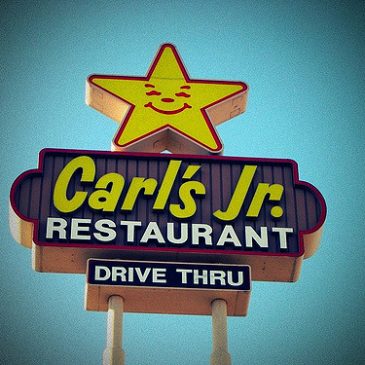Blog
We First 5: McDonald’s, Mic Cuts, & ‘Real Moms’

This post is the third in a series of conversations with purpose-driven leaders who shared insights at the Social Innovation Summit in Los Angeles this June. At the convention, innovators from some of the worlds most progressive brands discuss challenges, opportunities and ideas around growing business through impact. Here I had the chance to chat with Mike Masserman, Head of Global Policy and Social Impact at Lyft.
Lyft has made a name for itself as the more community oriented, purpose-driven ride sharing service. “Our mission is to improve people’s lives as the world’s best transportation,” Masserman shares.
Since its IPO earlier this year, Lyft is doubling down on impact. “What really excites me about going public is the opportunity to showcase the fact that we can be a public company for the public good,” Masserman tells We First Branding. “That doing good is also good business. That when you lead with value it creates value and the more you focus on impact, the more you grow. And the more you grow, the more impact you can have.”
Lyft isn’t the only company realizing the value of purpose from a business standpoint. The largest brands in the world, from Walmart to Google, are heeding the call for corporations to build a better world. Consumers want to support brands that align with their beliefs. In fact, nearly 90 percent of consumers say they would purchase a product that triggers a social contribution over a non-purposeful rival product of equal price and quality.
Post IPO, the ride hailing company started Lyft City Works. The initiative will be funded with 1% of profits or $50 million annually, whichever is bigger. “This is about going into cities and working with riders and drivers and community leaders and civic activists to make cities more livable,” says Lyft’s head of Social Impact.

Lyft City Works is focused on three key areas; providing underserved communities with transportation, building better transportation infrastructure and reducing transport related greenhouse gas emissions.
“Twenty three and a half million Americans are living in food deserts. In places like DC, in Ward Seven and Eight, they’re also living in transportation deserts. So, we partner with Martha’s Table in DC to provide reduced rides for people to get to the grocery store.” Masserman says. “We’re now launching that program all across the country.”
The transportation access program also includes rides for low income individuals that need medical assistance. For Example Lyft has partnered with Sister Friends, a Detroit-based organization that helps women through pregnancy.
“The drivers are the ones who are doing these incredible rides,” Masserman says. “We’re definitely working on making sure they know that they’re doing this incredible work and then we’re also working on different programs for drivers.” For example, Lyft recently launched an ESL program with Duolingo for drivers learning English.
In terms of infrastructure programs, Lyft is building “infrastructure for bikes and scooters in areas where typically transportation has been underserved,” Masserman shares. To tackle emissions, Lyft made “a multi-million dollar commitment. Last year, we paid to offset over two million metric tons of carbon. That’s the equivalent of 2.4 million acres of forestry.
Lyft’s impact stems from its mission to create the best transportation systems. “We have this opportunity to reimagine cities built around people and not cars. We’re really focused on this idea of people sharing rides as well as having these multimodal features,” Masserman explains. “Meaning if you want to take public transit, fantastic. It’s integrated into the app. If you want to take a bike or a scooter, it’s integrated into the app. It’s a one-stop shop for transportation.”
Lyft is a powerful example of a brand that’s leveraging its business for social good. At the center of its impact goals to build more livable cities is a strong community. Lyft is working to create a purposeful community with its drivers, riders and partners.
“More livable cities certainly need sustainability and decreased congestion, but more livable cities are also about people having more compassion and empathy and really creating more connection amongst themselves,” Masserman says. “There’s incredible connections that are being built during rides between passengers and drivers, even if it’s just creating the sense of respect and dignity and inclusivity.”
Lyft is also using its platform for good with numerous initiatives like the Wheels for All program, a partnership with drivers and United Way to help disaster and crisis victims. The brand took a policy stance with an ACLU partnership to oppose the Muslim travel ban. Lyft is also working on Human Rights campaigns for LGBTQ communities both within the organization and publicly.
On the consumer end, Lyft has built in a ‘Round Up and Donate’ feature. After each ride, Lyft rounds up the charge to the dollar and donates the spare change to a charity of the riders’ choice. The key takeaway here is that Lyft is using purpose to create a meaningful connection with its employees, consumers and impact partners.
Lyft’s wide array of social good programs might seem overwhelming if you are just starting to consider incorporating impact into your business. Where do you start? How do you pick a cause, or causes, that will make sense for your business?
Each brand is different; however, there are a few pillars of purpose that can help you align your brand with impact. “It has to be rooted in trying to solve problems for our ‘Why’,” Masserman explains. In other words, you must use your social good campaigns to build on your purpose.
Since there are so many great causes out there and so many ways to tackle them, it is also paramount to have criteria for selecting impact.
“One of the great challenges is that impact was happening all across the company,” Masserman says. “Frankly, a lot of folks were just giving money to different nonprofits, which is great because nonprofits need money, but what we did was readjust that frame and say we are a transportation company. Let’s focus on giving rides to people because we could really maximize our unique impact by focusing on rides.”
Masserman says Lyft also applies risk analysis processes to impact campaigns, especially in the policy arena. “The recent slate of hate bills in places like Tennessee are happening at times when we have legislation up in these places. So having a commitment to always lead with your values is critical, while also acknowledging that you’re taking some of these risks has been really important.”
Regardless of what approach you take to your purpose driven initiatives it’s important to maintain authenticity, right action, connect with community and tell compelling stories.
“I would argue that responsibility is something that has to be inherent in every company around the world. But you have to genuinely care about these issues and you have to identify what your values are upfront,” Masserman says. “The company, the founders, the leaders within the company have to genuinely care about this.”
“I think second it has to be rooted in authentic action. For us, we have a superpower of transportation. I would say that the authentic action for other companies comes from focusing on what you’re good at.”
“Third, is having it be rooted in community. When your communities are threatened you have to be able to stand up for your community. You have to be able to say what’s right and have action behind it.”
Lyft’s leadership uses the brand to take the right actions and connect with communities during timely events. For example, “We saw a statistic that there were 16 million Americans in 2016 who were registered to vote didn’t vote because of transportation-related issues,” Masserman says. “So we provided free and reduced rides to the polls this past election and it wasn’t about politics. It was about civic engagement and it was about using our power of transportation to provide those kinds of rides.”
Purpose fuels growth and growth fuels impact. Lyft not only acts on impact during timely intervals, it is also building on the long term vision of livable cities. As Masserman shares, “I’m really most excited about collaborating with cities, working with riders, drivers, civic activists and community leaders. To do the transportation work and to think about how to create a clean energy future so we can maximize our impact.”

We First 5: McDonald’s, Mic Cuts, & ‘Real Moms’

Purpose At Work: Why VF Corp Boycotts Brazilian Leather As Amazon Burns

We First 5: Verizon, Nivea, & Carl’s Jr.

